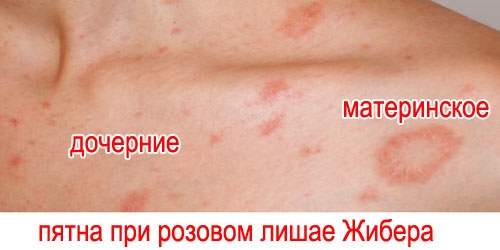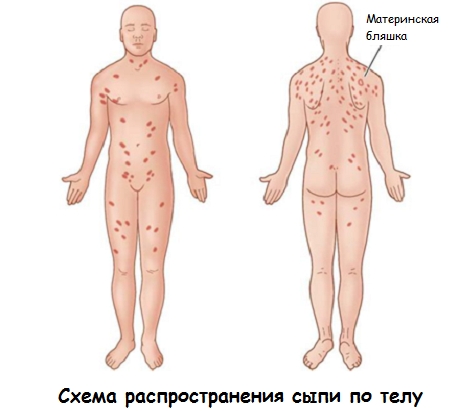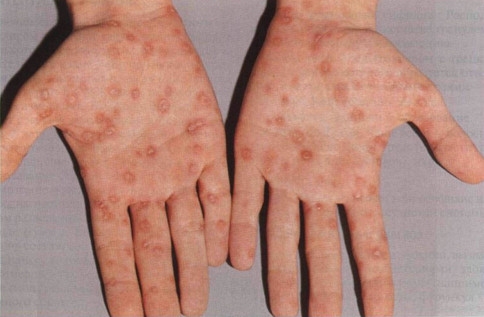Pityriasis rosea of Zhibera or pink pitriasis – acute inflammatory self-resolving dermatosis, usually affecting & nbsp; young people. The disease is characterized by maculopapular and erythematous-squamous lesions, which are localized mainly on the trunk and extremities.
To date, the etiology of lichen has not been fully established, but the hypothesis of an infectious origin (Herpeviruses types 6 and 7) is considered generally accepted. For depriving Zhibera seasonality is typical: the highest frequency occurs in the spring-autumn period.
On estet-portal.com read about the origin of the disease, the main symptoms and methods of treatment of lichen rosacea.
Clinical picture of pink lichen: specific symptoms
Typically, lichen rosea begins as a bright pink, oval, slightly raised plaque 2-5 cm in size, most commonly on the trunk. In the future, the first focus, or "maternal" the plaque begins to peel off over its entire surface, and 7-10 days after its appearance, new foci appear – "subsidiaries" plaques. The elements extend to the chest, abdomen, back, upper and lower extremities.
Read us also in Telegram
A typical symptom of such rashes is the "collar" symptom; or "medallion": between the central and peripheral parts of the spot there is a rim of peeling. Another diagnostic criterion for pink lichen is the location of spots along the folds and lines of skin tension (Langer lines). During this period, the maternal plaque turns pale and gradually disappears. The disease is characterized by an undulating course: after 7-10 days, new spots may appear against the background of already manifested ones and the state of health may worsen before a new rash.
Lichen on the face: common types and characteristic symptoms

Differential diagnosis of lichen roseta with other dermatoses

Despite the characteristic clinical picture, Gibert's lichen should be differentiated from similar diseases.
These include:
• psoriasis;
• seborrheic eczema;
• seborrheic parapsoriasis;
• syphilis;
• mycosis of smooth skin.
Psoriasis is characterized by papular rashes in typical places: on the scalp, extensor surfaces of the extremities, lower back. Also, in psoriasis, various phenomena are caused (Auspitz triad, Koebner reaction).
However, in the initial stage of the disease, it may be difficult to make a diagnosis, since psoriatic elements look like spots without a noticeable infiltrate.
With seborrheic eczema, the scalp and face are mainly affected, there is no characteristic for depriving the location along the Langer lines. Scales in this disease – greasy, in contrast to pink lichen, which is characterized by fine pityriasis peeling.
Teardrop-shaped parapsoriasis is characterized by the presence of papular elements of the same size, peeling in the form of a cloud and the presence of phenomena characteristic of psoriasis.

Syphilitic roseola is paler in color than Gibert's lichen. Papular syphilide has a copper-red color and a dense infiltrate at its base. Peeling in the form of Biett's collar is also characteristic of the papule with syphilis. A serological test for syphilis must be performed to confirm the diagnosis.
Mycosis of smooth skin is confirmed when the pathogen is detected by microscopic examination.
Read also: Typical and atypical signs of syphilis: how to recognize the disease in time
Prevention and drugs used in the treatment of lichen rosex
There is no specific treatment for lichen roseta and in most cases the disease regresses on its own. But for a protracted course of the disease, antihistamines (chloropyramine, clemastine, loratadine), steroid ointments (hydrocortisone, dexamethasone, methylprednisolone) are used.
In complicated forms of lichen, corticosteroids are used systemically orally (prednisolone 15-20 mg per day until symptoms are relieved).
From non-drug methods, ultraviolet medium wave therapy with a wavelength of 280-320 nm is used 5 times a week for 1-2 weeks.
Prevention of pink lichen is to strengthen the immune system, treat concomitant infectious diseases and vitamin therapy.
You may be interested in: Treatment of lichen sclerosus: how to beat the disease







Add a comment